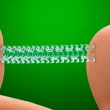In-stent restenosis (ISR) remains the main limitation in the percutaneous treatment of coronary artery disease, with a prevalence between 5% and 10% after implantation of latest-generation drug-eluting stents (DES). Therapeutic recommendations for it include the implantation of a new DES and the use of drug-coated balloons (DCB). The rate of recurrent ISR ranges from 10%...
Long-Term Results from the BEST Study: Drug-Eluting Stents vs. Bypass Surgery in Diabetic Patients with Multiple Vessel Disease
The impact of diabetes on the development of cardiovascular disease is widely known, with a strong association with extensive and diffuse coronary artery disease. Decision-making regarding how to revascularize patients with multi-vessel disease is a complex process. In this context, coronary artery bypass grafting (CABG) has been recommended over percutaneous coronary intervention (PCI) based on...
Drug-Eluting Stents vs. Balloons While Paclitaxel Is in the Eye of the Storm
Even after the US Food and Drug Administration (FDA) issued an alert on paclitaxel devices in patients with femoropopliteal artery disease, which caused the interruption of a few ongoing studies, reality indicates that the efficacy of these devices has been proven and that they are still used. The increased mortality observed in the meta-analysis that...
TCT 2018 | IMPERIAL: First Study Comparing Drug-Eluting Stents in Patients with Femoropopliteal Disease
The IMPERIAL trial compared the safety and efficacy of a nitinol self-expanding polymer-free placlitaxel-eluting stent (Zilver PTX, Cook Medical, already approved by the US Food and Drug Administration [FDA]) and a nitinol self-expanding polymer-coating placlitaxel-eluting stent (Eluvia, Boston Scientific). This was a single-blind randomized trial in patients with symptomatic intermittent claudication (Rutherford categories 2, 3, or...
Bioresorbable scaffolds with drug-eluting stents: do they entail a higher thrombosis risk?
Courtesy of Dr. Leiva. Bioresorbable scaffolds with drug-eluting stents (bioresorbable vascular scaffolds, BVS) have been added to the list of endovascular treatment options for coronary disease. The ABSORB III trial showed the non-inferiority of this stent type to everolimus-eluting metallic stents as regards target-lesion revascularization (TLR) at one year. However, reports have suggested a higher...
Very Late Thrombosis: Bioresorbable Scaffolds vs. Everolimus-Eluting Metallic Drug-Eluting Stents
This study sought to compare the 2-year outcomes between bioresorbable vascular scaffolds (BVS) and everolimus-eluting metallic drug-eluting stents (EES), since the occurrence of very late thrombosis (thrombosis beyond 1 year after implantation) is an increasing concern in relation to new devices. This meta-analysis was conducted based on 24 studies (BVS: n = 2567 and EES: n = 19,806) reporting the...
IVUS vs. Angiography in New-Generation Drug-Eluting Stents Preimplantation
Courtesy of Dr. Guillermo Migliaro. The latest 2011 American College of Cardiology (ACC) guideline states that “coronary intravascular ultrasonography (IVUS) may be considered for guidance of coronary stent implantation, particularly in cases of left main coronary artery stenting (Class IIB, Level of Evidence: B).” This has been long debated with no clear winners. This analysis provides new information...
I-LOVE-IT2: Drug-eluting stents with a permanent polymer versus biodegradable in the same cobalt chromium platform
There is no strong evidence in the literature that the polymer type isolated (permanent or degradable) influences clinical outcomes after angioplasty and if the time of double anti-aggregation should be different with the degradable polymer. This work, with non-inferiority design, aimed to compare the sirolimus-eluting biodegradable polymer stent (Tivoli) versus the permanent polymer sirolimus-eluting stent...
SORT OUT V: Comparison of drug-eluting stents: One with degradable polymer releasing biolimus and the other a permanent polymer sirolimus stent.
SORT OUT V randomized trial (Odense University Hospital, Denmark) compared Nobori stent, a drug-eluting stent with biodegradable polymer eluting biolimus, versus CYPHER a drug-eluting stent with permanent polymer in the real world. Danish researchers used a non-inferiority design, by means of a primary objective of the study, the combined rate of major cardiac events (cardiac...
PROTECT: A comparison of thrombosis incidence between the drug-eluting stents sirolimus and zotarolimus.
Summary: Randomized, open, pragmatic essay PROTECT (patient related outcomes of Endeavor versus Cypher stenting trial) compared two drug-eluting stents with different behaviors, (Cypher ® and Endeavor ®), in the reendothelialization degree and antiproliferative potency. Cypher has a permanent sirolimus-eluting polymer which generates a potent antiproliferative effect and a suboptimal healing (or reendothelialization). Furthermore, Endeavor has...









